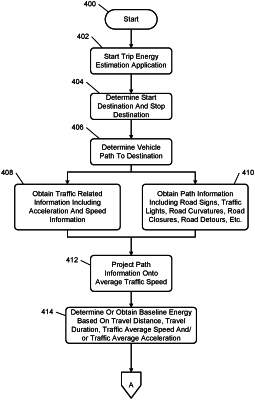| CPC G01C 21/3469 (2013.01) [B60W 40/00 (2013.01)] | 18 Claims |

|
1. A trip energy estimation system comprising:
a memory configured to store average traffic speed data, average traffic acceleration data, driver speed data, and driver acceleration data, wherein the driver speed data and the driver acceleration data are historical data specific to a particular driver; and
a control module configured to execute an algorithm to estimate an amount of energy for an electric vehicle to travel from a first location to a second location, the algorithm comprising
determining, based on the average traffic speed data and the average traffic acceleration data, a baseline amount of energy for the electric vehicle to travel from the first location to the second location,
determining, based on the driver speed data and the driver acceleration data, a dynamic amount of energy based on (i) stop and go events, (ii) over speeding, and (iii) under speeding, wherein the dynamic amount of energy is based on historical over speeding and under speeding behavior of the particular driver as compared to average traffic speed and average traffic acceleration rates, and
determining a total amount of energy based on the baseline amount of energy and the dynamic amount of energy,
wherein the control module is configured
based on the total amount of energy, to perform operations including indicating a trip estimate, and
to perform the operations to minimize energy usage and extend at least one of drive time and distance traveled, the operations including i) limiting an acceleration rate of the electric vehicle, ii) selecting which electrical load requests to satisfy, and iii) enabling selected electronic devices of the electric vehicle corresponding to the selected electrical load requests to satisfy.
|